|
Artifacts of the Rush for Riches
by
Bob Brooke
The quest for quick
riches was a driving force in the American West of the 19th century.
Hundreds of thousands of prospectors, experienced and amateur alike,
dropped everything and headed west to find their fortunes. The dream of
gold broke up families and set friend against friend.
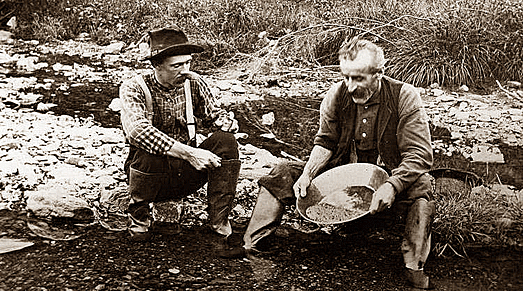
The Lure of Gold
The first “gold rush” occurred in northern California. Although James
Marshall discovered a tiny bit of gold worth about 50 cents in 1848, it
wasn’t until 1849 that gold fever hit the country since news traveled
more slowly back then. And though the first prospectors found bits of
gold by kicking up the dirt, the ease of finding gold rush antiques
today is far more challenging.
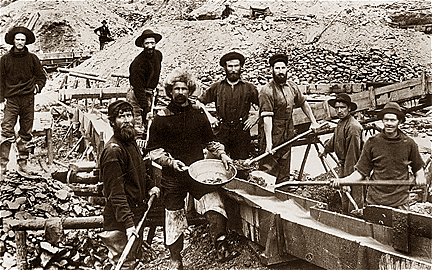 Those
who participated in it became known as “Forty-Niners.” But this wasn’t
the first gold strike. Two others—one in North Carolina and another in
Georgia—happened earlier. The lure of finding gold in California was
simply too tempting. But the dreams of riches only panned out for a few.
It was the wise entrepreneurs—store owners, hoteliers, saloon and
gambling establishment owners, sellers of mining supplies, and, of
course, bankers—who made their fortunes off the gold seekers Those
who participated in it became known as “Forty-Niners.” But this wasn’t
the first gold strike. Two others—one in North Carolina and another in
Georgia—happened earlier. The lure of finding gold in California was
simply too tempting. But the dreams of riches only panned out for a few.
It was the wise entrepreneurs—store owners, hoteliers, saloon and
gambling establishment owners, sellers of mining supplies, and, of
course, bankers—who made their fortunes off the gold seekers
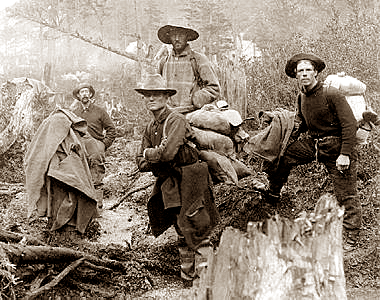 The
Pike's Peak Gold Rush (later known as the Colorado Gold Rush) was the
boom in gold prospecting and mining in the Pike's Peak Country of
western Kansas Territory and southwestern Nebraska Territory of the
United States that began in July 1858 and lasted until roughly the
creation of the Colorado Territory on February 28, 1861. An estimated
100,000 gold seekers took part in one of the greatest gold rushes in
North American history. The
Pike's Peak Gold Rush (later known as the Colorado Gold Rush) was the
boom in gold prospecting and mining in the Pike's Peak Country of
western Kansas Territory and southwestern Nebraska Territory of the
United States that began in July 1858 and lasted until roughly the
creation of the Colorado Territory on February 28, 1861. An estimated
100,000 gold seekers took part in one of the greatest gold rushes in
North American history.
The Pike's Peak Gold Rush, which followed the California Gold Rush by
approximately one decade, produced a dramatic but temporary influx of
immigrants into the Pike's Peak Country of the Southern Rocky Mountains.
The rush was exemplified by the slogan "Pike's Peak or Bust!", a
reference to the prominent mountain at the eastern edge of the Rocky
Mountains that guided many early prospectors to the region westward over
the Great Plains.
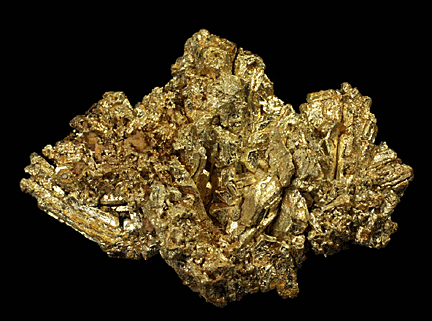 The
rush created mining camps such as Denver City and Boulder City that
would later develop into cities. Scores of other mining camps faded into
ghost towns, but quite a few camps such as Central City, Black Hawk,
Georgetown, and Idaho Springs survive. The
rush created mining camps such as Denver City and Boulder City that
would later develop into cities. Scores of other mining camps faded into
ghost towns, but quite a few camps such as Central City, Black Hawk,
Georgetown, and Idaho Springs survive.
Rumors of gold in the Black Hills spread earlier in the 19th century.
But it wasn’t until 1860 when Father De Smet, a Roman Catholic
missionary, reported seeing Sioux Indians carrying gold which they told
him came from the Black Hills in the Dakota Territory, that the rush
began. It peaked between 1876 and 1877.
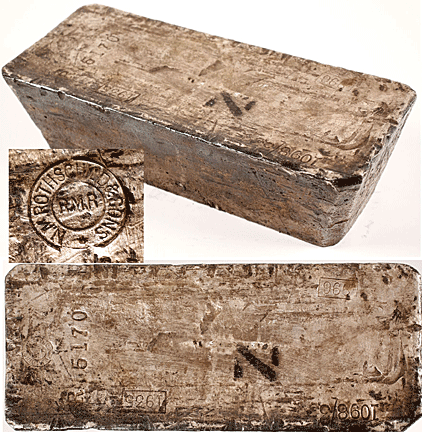 About
the same time, prospectors discovered gold in the Cripple Creek area of
Colorado, and another rush, which lasted until the early 1900s, was on.
Mining communities sprang up quickly, but most lasted only as long as
gold continued to be produced. About
the same time, prospectors discovered gold in the Cripple Creek area of
Colorado, and another rush, which lasted until the early 1900s, was on.
Mining communities sprang up quickly, but most lasted only as long as
gold continued to be produced.
And let’s not forget the silver rushes in Colorado, Nevada, California,
and Utah. In 1859, several prospectors discovered the rich silver ore of
the Comstock Lode, and a great rush of miners poured eastward from
California, establishing Gold Hill and Virginia City as the principal
towns.
The prospectors participating in all these rushes needed a variety of
specialized equipment to work their claims. Picks and shovels, ore pans,
lanterns and an assortment of specialized lights, buckets, and much more
are what make up an antique collection category called mining artifacts.
What is a Mining Artifact?
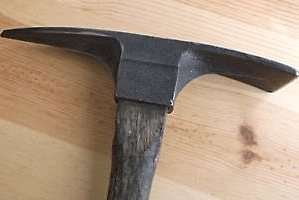 A
mining artifact can be any item associated with mining. This would
include tools, implements, and equipment, such as picks, hammers, hand
drills, all types of underground blasting items, all types of mine
lighting, such as candlestick, oil, and carbide lamps, oil cadgers,
carbide flasks, hats and helmets, instruments for underground surveying,
anemometers, signs, as well as larger items such as hand crank and
pneumatic drills, ore cars, ore buckets, stamping equipment, hoisting
and pumping equipment. There’s also a myriad of associated items
available to collectors, such as mining photos, stock certificates,
scrip tokens and certificates, mining union items, various badges, pins,
ribbons and fobs, safety awards, company checks brochures, letterhead
and other documents, advertising, commemorative items, signs, statues,
and the list goes on and on. A
mining artifact can be any item associated with mining. This would
include tools, implements, and equipment, such as picks, hammers, hand
drills, all types of underground blasting items, all types of mine
lighting, such as candlestick, oil, and carbide lamps, oil cadgers,
carbide flasks, hats and helmets, instruments for underground surveying,
anemometers, signs, as well as larger items such as hand crank and
pneumatic drills, ore cars, ore buckets, stamping equipment, hoisting
and pumping equipment. There’s also a myriad of associated items
available to collectors, such as mining photos, stock certificates,
scrip tokens and certificates, mining union items, various badges, pins,
ribbons and fobs, safety awards, company checks brochures, letterhead
and other documents, advertising, commemorative items, signs, statues,
and the list goes on and on.
What to Collect and Why?
Collectors can decide to concentrate on a single item like carbide cap
lamps or broaden their scope of interest to include more than one type
of mine lighting. Some collectors concentrate their collecting on a
single mine or mining company, a single mining town, mining district,
mining region or mining state. Others focus on a particular type of
mining such as gold, silver, copper, iron, lead, tin, or coal.

The list of mining equipment and related memorabilia is as varied as the
type of mining. From simple picks and shovels to blasting cap tins,
signs, ore cars, ore buckets, and a variety of lights. There’s also a
wealth of ephemera for mining collectors, including steamship tickets
used by gold seekers, maps of mining regions, mining stock certificates,
and more.
It’s not just the artifact but the history associated with it that
attracts most collectors. Many feel the desire to preserve these items
from the country’s industrial past.
Where to Find Mining Artifacts
Where can mining artifacts be found? Most collectors find them where
other antiques and collectibles can be found—flea markets, antique
shops, antique shows, auctions, and yard sales, as well as the Internet.
The largest online venue for collectors is eBay. If you go to Ebay and
type in "mining", "miners", :mines, "mine" and "coal" you will get
literally thousands of hits for items currently offered. If you want to
avoid going through thousands of items you can be more discriminating
and type such key word/words as "carbide lamp", "blasting cap tin" ,
"oil wick lamp", "safety lamp", "mining company", "mining stock",
"scrip", "blasting", etc.
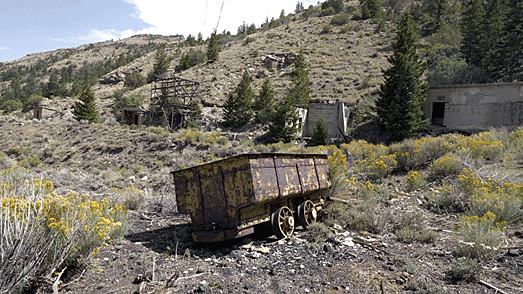
Adventurous collectors can still find artifacts to be found around old
mining sites, the more remote the better. Just remember that these sites
are dangerous due to possible open shafts and decaying structures. For
the truly adventurous collector there are old mines that can be explored
for artifacts. Mine exploring should only be done by those experienced
in underground exploring or if you are accompanied by others who are
experienced. Remember that abandoned mine sites will most likely be on
private or government property.
Collect What You Can Afford
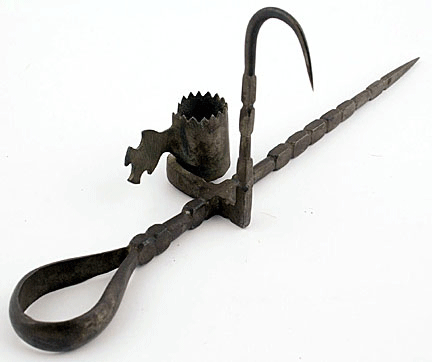 Once
you decide what you want to collect always buy the highest quality item
that you can afford, both in rarity and condition. The problem with
commonly found items are just that, they are common and easily obtained.
Items in poor condition, that is dented, rusted, cracked, missing parts,
crudely repaired, and/or modified have neither the value or collector
interest that an all original mint condition piece would have. From an
investment and ability to resell in the future standpoint, you are
always better off buying the best condition mining artifact you can
reasonably afford. Once
you decide what you want to collect always buy the highest quality item
that you can afford, both in rarity and condition. The problem with
commonly found items are just that, they are common and easily obtained.
Items in poor condition, that is dented, rusted, cracked, missing parts,
crudely repaired, and/or modified have neither the value or collector
interest that an all original mint condition piece would have. From an
investment and ability to resell in the future standpoint, you are
always better off buying the best condition mining artifact you can
reasonably afford.
.
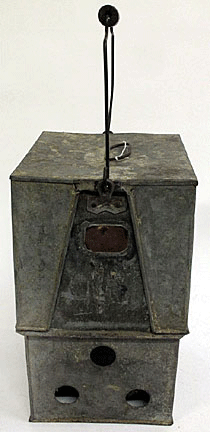 There
are basically three factors that determine the value of a mining
artifact: 1) condition, 2) rarity and 3) aesthetics/desirability. Any
knowledgeable collector of any type of antique or collectible knows that
a mint item has more value than one that is dented, rusted, cracked,
chipped, scratched, missing parts, or has been crudely repaired or
modified, mining artifacts are no exception. There
are basically three factors that determine the value of a mining
artifact: 1) condition, 2) rarity and 3) aesthetics/desirability. Any
knowledgeable collector of any type of antique or collectible knows that
a mint item has more value than one that is dented, rusted, cracked,
chipped, scratched, missing parts, or has been crudely repaired or
modified, mining artifacts are no exception.
Rarity, desirability and aesthetics are all linked. To some collectors
an item is desirable merely because it’s rare. Others may find an item
desirable because it is aesthetically pleasing to them. Some collectors
consider an item to be desirable just because it is different than the
norm. On the other hand, a lamp that is different looking or rare may
not appeal to some collectors because they consider it "ugly", remember
that beauty is in the eye of the beholder.
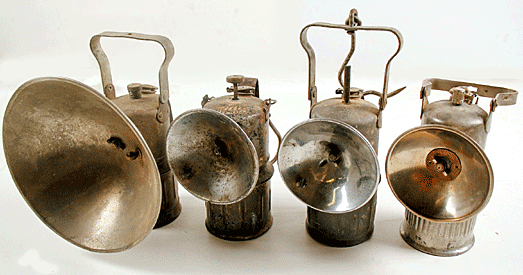
When buying mining artifacts, especially mining lamps, there are some
things to watch out for. These include overall condition, wrong parts
and missing parts. Lamps in particular are easy to fake or reproduce.
And although gold rush antiques may be expensive, mining memorabilia
from the Old West is definitely affordable.
<
Back to Antiques Archives
Next Article > |
